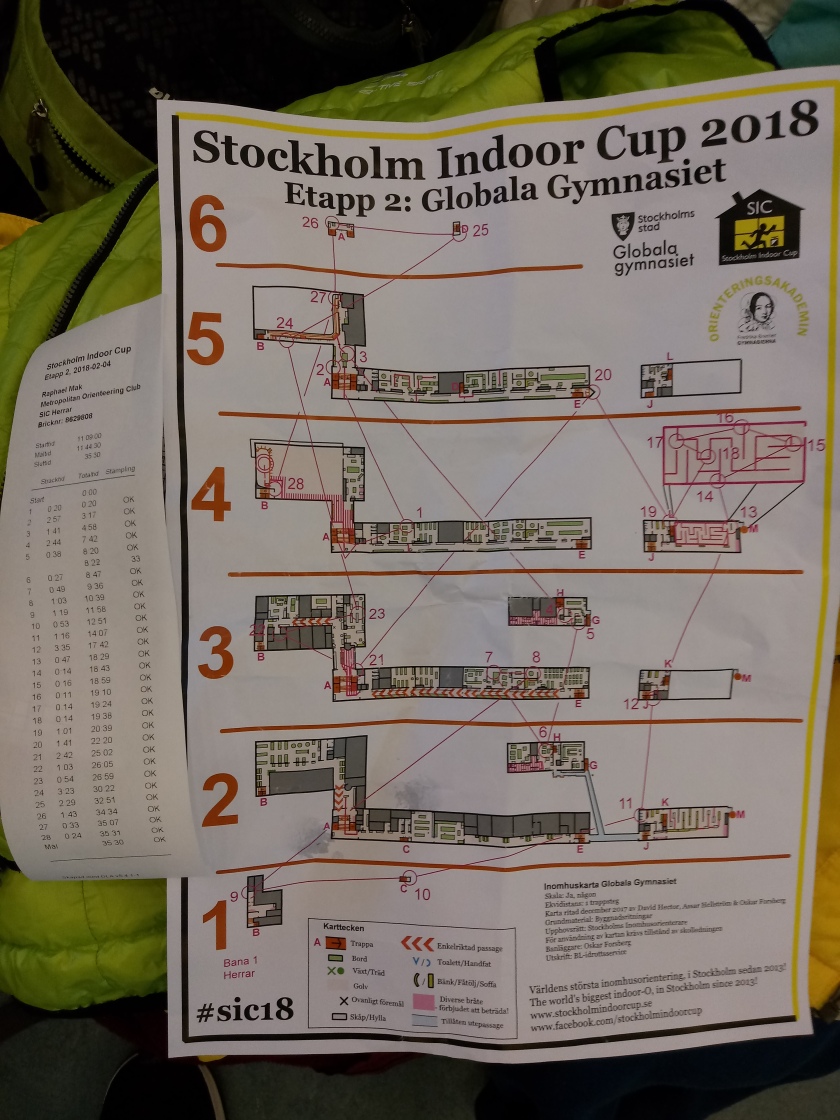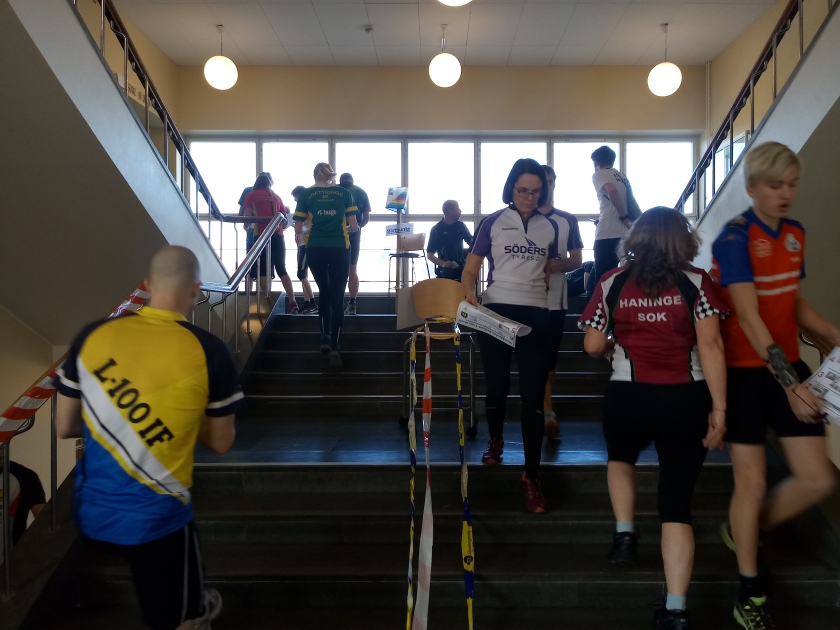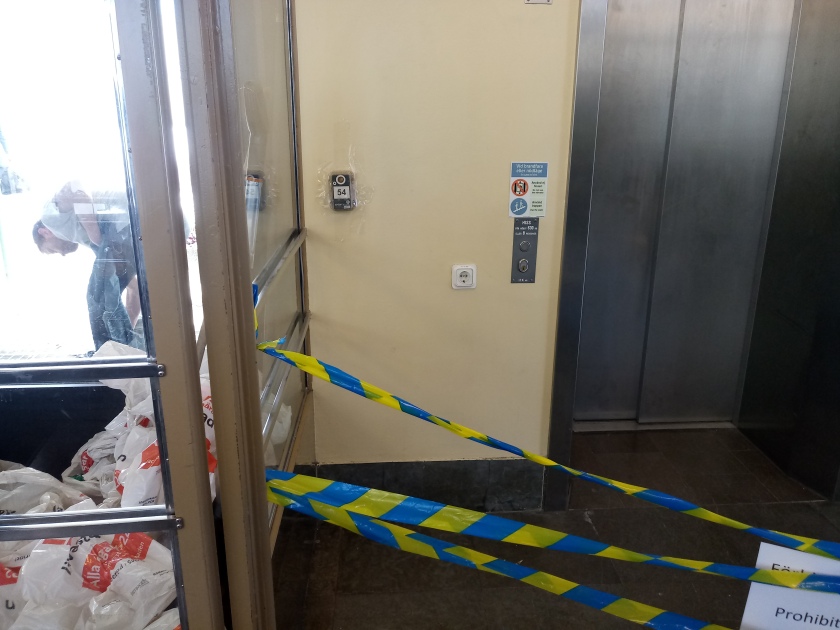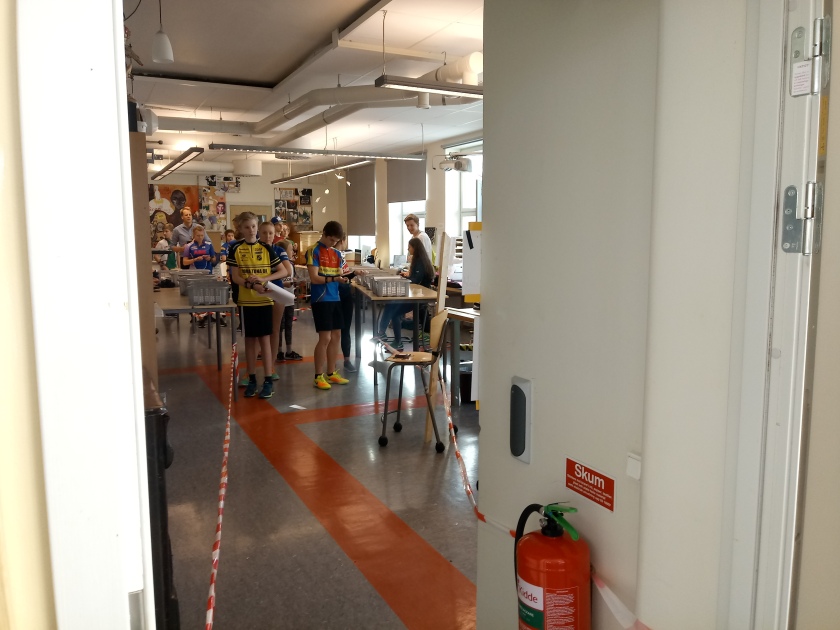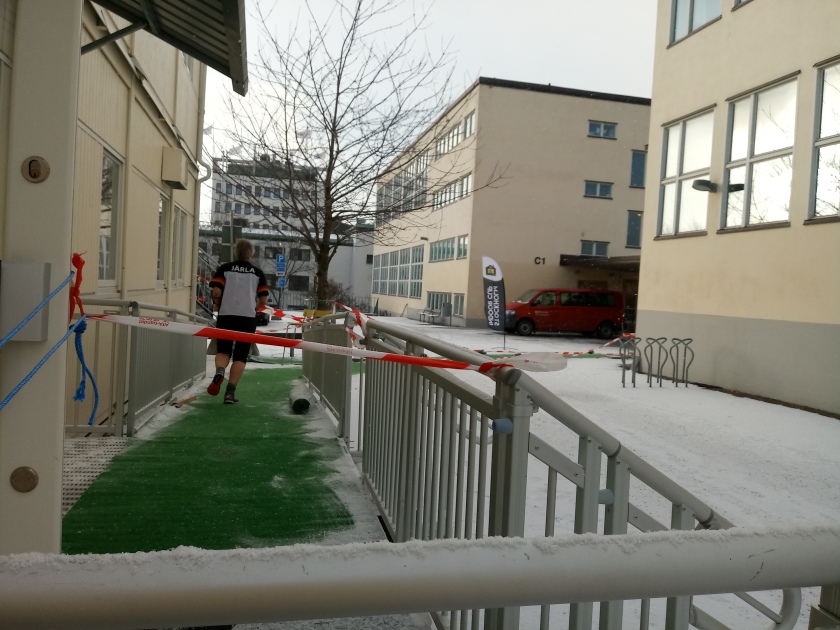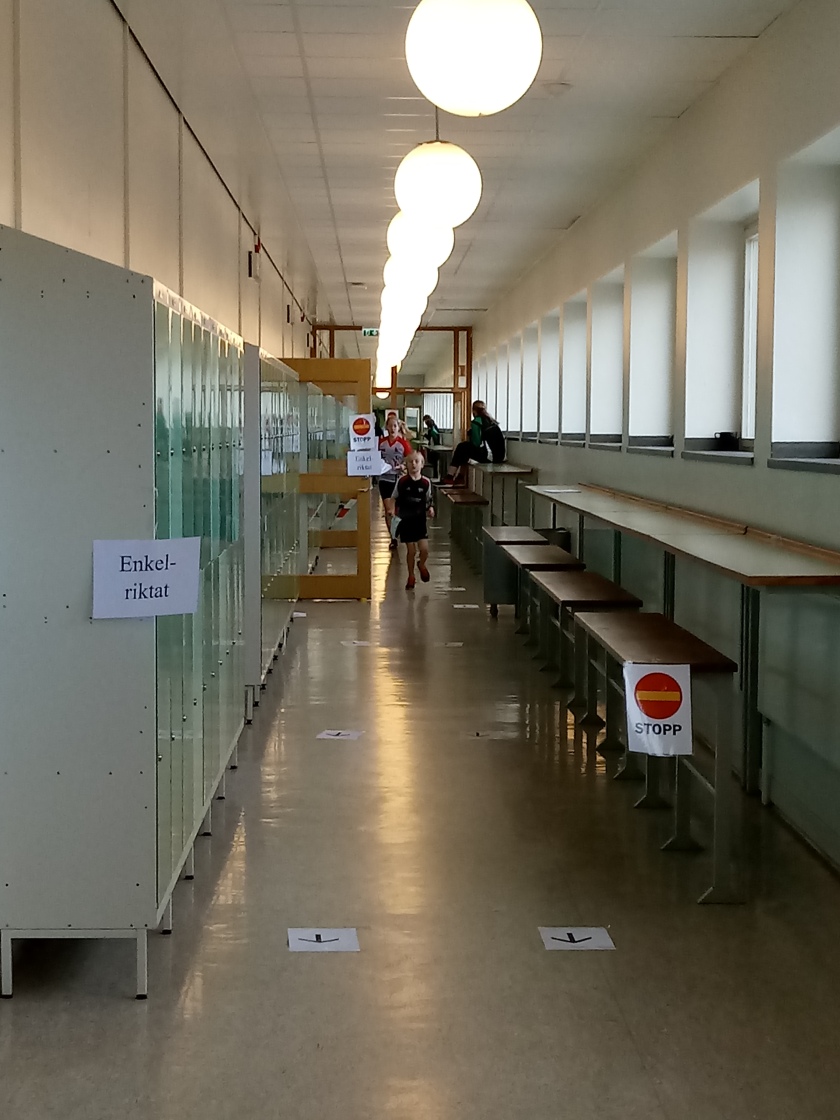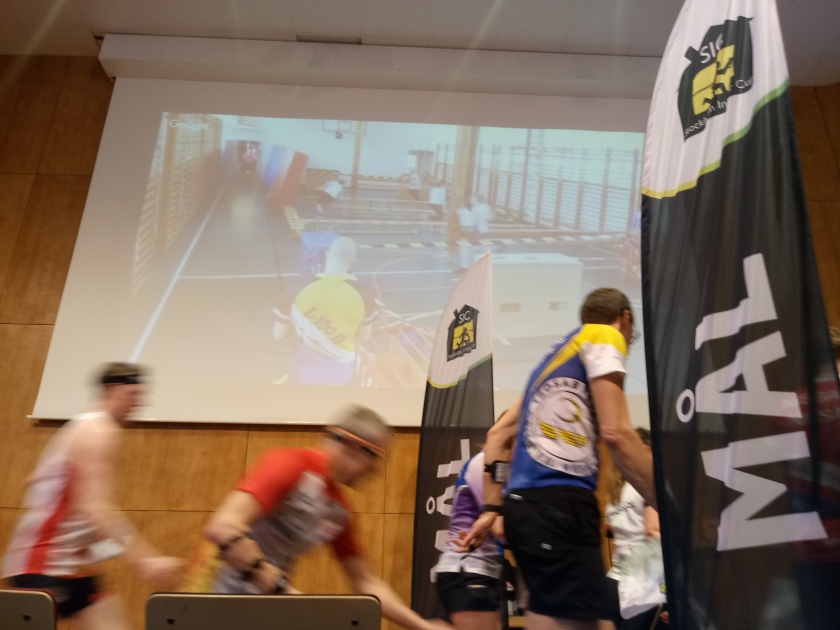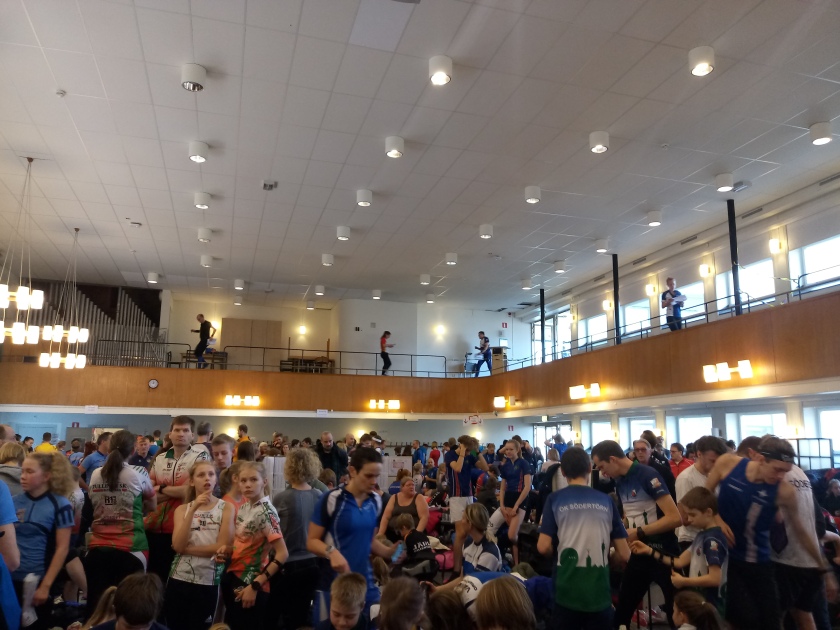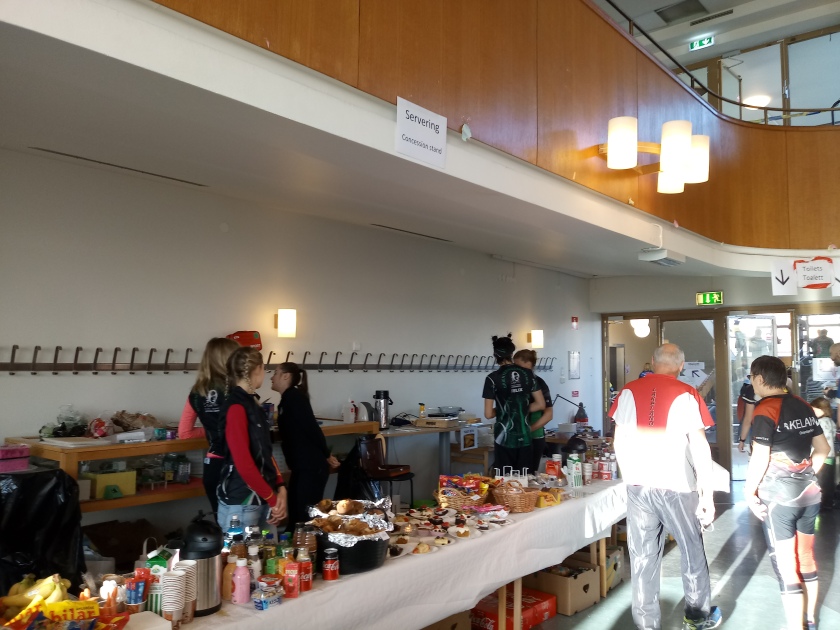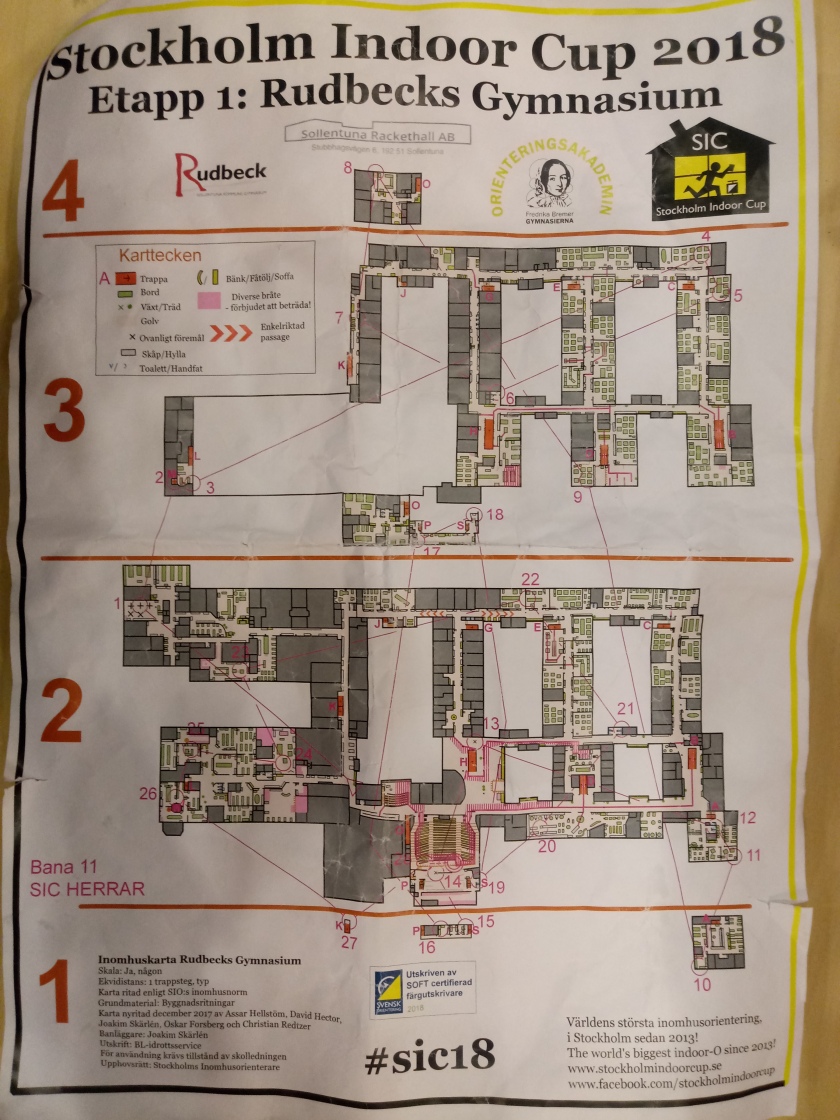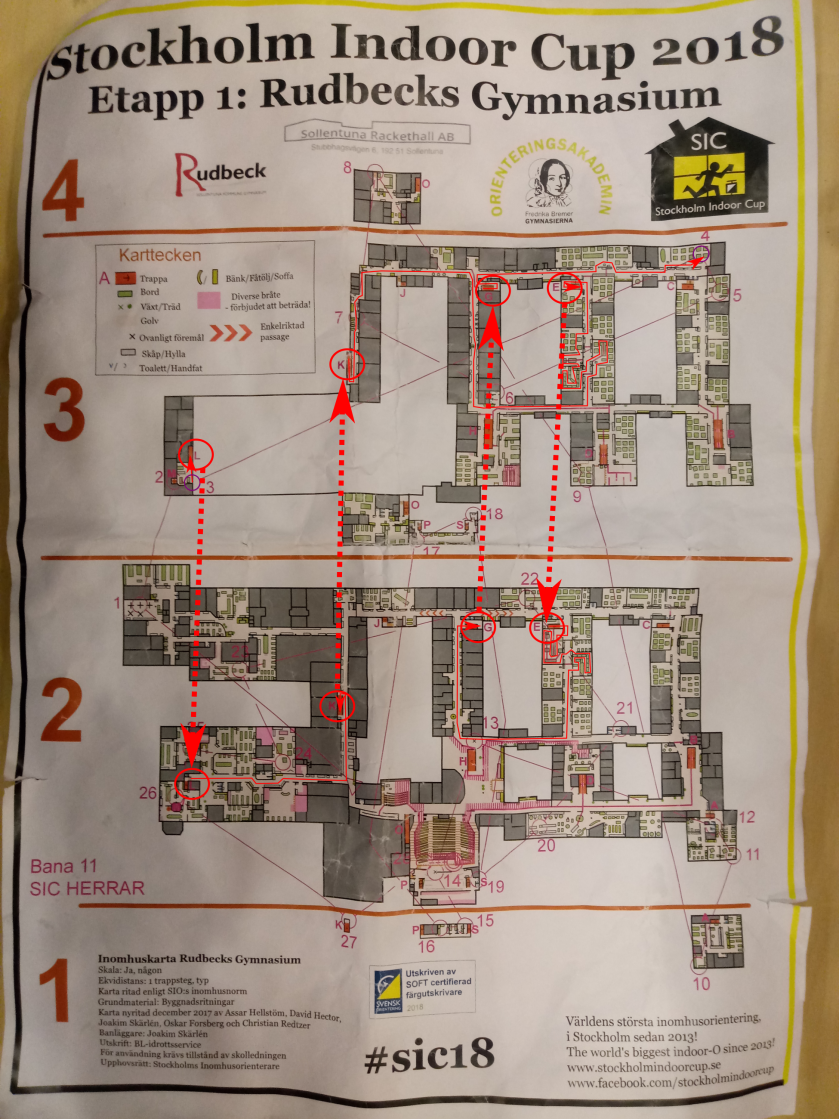Everything written in this proposal are purely of my own personal opinion and not related to, or sanctioned by, any other club or organisation. Discussion is welcome and any coincidental or intended adoption of the proposal is even more welcome. In any case, this proposal is purely motivated by a desire to improve the state of school orienteering in Hong Kong, and above all, I do not deserve to gain the enmity of anyone because of this proposal.
Introduction
Problems are observed with the current interschool competitions. Nowadays, these competitions are often poorly designed and organised, and congested with competitors, which affects the fairness and legitimacy of these competitions. Moreover, elite schools are able to field large teams, thus taking the bulk of the rank points and scooping up most of the prizes, while schools with a few high-performance orienteers have little chance to challenge a prize. The interschool system thus needs a overhaul to save it from being a mere showdown between a few schools, or worse, a farce. The system also needs to steer away from the focus on forest orienteering, and promote other formats and disciplines, in order to foster the development of holistic orienteers.
Objectives
- To bring the system more in line with other interschool sports competed in Hong Kong, taking reference from the HKSSF system in Athletics (where a qualification from District events to Elite events is already in place)
- Emphasising quality over quantity, decentralising “power” from a few elite schools with large teams (so-called “people-sea strategy”), allowing more schools to compete for team prizes
- Fostering a culture of smaller, closely-knit school teams, preferred over today’s often large, loose teams
- Ensuring the fairness of events by reducing congestion in the competition area
- Making team results reflect performance, not team size
- Rewarding effort made by individual runners
- Placing attention on a more holistic set of formats; diversion from the forest-orienteering-only mindset of the past
- Promote Trail Orienteering in schools to breed potential new stars, and support the development of Trail-O in Hong Kong
Key points
- Renaming the events: Interschool District and Interschool Elite (Objective 1)
- Reducing the number of competitors in the Elite event (Final) (Objectives 2, 3, 4)
- Reducing the rank points awarded: from today’s 40 ranks to 8 ranks (Objectives 1, 2, 3, 5)
- Introducing standard points for all runners within 2x time of winner (Objectives 1, 6)
- Removing the minimum requirement of started competitors for team ranking (Objective 2, 5)
- New Sprint event (Objective 7)
- New Relay events (Objective 3, 7)
- New Trail-O interschool series (Objectives 7, 8)
- Team results to be based on the sum of points earned in all formats within the same discipline (Objective 7)
- Should Mountain Bike Orienteering gain traction in Hong Kong in the future, the system can be expanded to a new MTB-O series (Objective 7)
Interschool District (currently JSOC Heats)
|
Sprint |
Middle |
Sprint Relay |
Middle Relay |
Pre-O |
TempO |
Trail-O Relay |
Team results[1] |
| HKI |
Unlimited runners
10 to Elite event
4 prizes[2] |
Unlimited runners
10 to Elite event
4 prizes |
To be implemented once participation in the Elite events exceed 30 runners (individual)/15 teams (relay) for each format.
Once implemented, qualification to Elite event is first 10 runners (individual)/5 teams (relay) in each District. |
Sum of all points in Sprint + Middle in all grades |
| Kowloon |
Unlimited runners
10 to Elite event
4 prizes |
Unlimited runners
10 to Elite event
4 prizes |
Sum of all points in Sprint + Middle in all grades |
| NT |
Unlimited runners
10 to Elite event
4 prizes |
Unlimited runners
10 to Elite event
4 prizes |
Sum of all points in Sprint + Middle in all grades |
| Sample date |
Week 45 Saturday |
Week 45 Sunday |
(Week 43 Saturday) |
(Week 43 Sunday) |
(Week 41 Saturday AM) |
(Week 41 Saturday PM) |
(Week 41 Sunday) |
|
|
|
|
|
|
|
|
|
|
|
|
|
HKI |
Kowloon |
NT |
| Rank points |
Standard points |
Qualifies for Elite event |
Rank points |
Standard points |
Qualifies for Elite event |
Rank points |
Standard points |
Qualifies for Elite event |
| 1st |
9 |
1 |
Yes |
9 |
1 |
Yes |
9 |
1 |
Yes |
| 2nd |
7 |
1 |
Yes |
7 |
1 |
Yes |
7 |
1 |
Yes |
| 3rd |
6 |
1 |
Yes |
6 |
1 |
Yes |
6 |
1 |
Yes |
| 4th |
5 |
1 |
Yes |
5 |
1 |
Yes |
5 |
1 |
Yes |
| 5th |
4 |
1 |
Yes |
4 |
1 |
Yes |
4 |
1 |
Yes |
| 6th |
3 |
1 |
Yes |
3 |
1 |
Yes |
3 |
1 |
Yes |
| 7th |
2 |
1 |
Yes |
2 |
1 |
Yes |
2 |
1 |
Yes |
| 8th |
1 |
1 |
Yes |
1 |
1 |
Yes |
1 |
1 |
Yes |
| 9th |
|
1 |
|
|
1 |
|
|
1 |
|
| 10th |
|
1 |
|
|
1 |
|
|
1 |
|
| 11th |
|
1 |
|
|
1 |
|
|
1 |
|
| … |
|
1 |
|
|
1 |
|
|
1 |
|
| Winner’s time x 2 |
|
1 |
|
|
1 |
|
|
1 |
|
| … |
|
|
|
|
|
|
|
|
|
| (unlimited participation) |
|
|
|
|
|
|
|
|
|
Interschool Elite (currently JSOC Final)
|
Sprint |
Middle |
Sprint Relay[3] |
Middle Relay |
Foot-O Team results |
Pre-O |
TempO |
Trail-O Relay[4] |
Trail-O Team results |
|
30 qualified runners
4 prizes |
30 qualified runners
4 prizes |
4 in a team
1 team per school
4 prizes |
3 in a team
1 team per school
4 prizes |
Sum of all points in all 4 events in all grades |
Unlimited runners
4 prizes |
Unlimited runners
4 prizes |
3 in a team
1 team per school
4 prizes |
Sum of all points in all 3 events in all grades |
| Sample date |
Week 5 Satuday |
Week 5 Sunday |
Week 6 Saturday |
Week 6 Sunday |
|
Week 18 Saturday AM |
Week 18 Saturday PM |
Week 18 Sunday |
|
|
Individual events |
Relay events |
|
Rank points |
Standard points |
Rank points |
Standard points |
| 1st |
9 |
1 |
18 |
1 |
| 2nd |
7 |
1 |
14 |
1 |
| 3rd |
6 |
1 |
12 |
1 |
| 4th |
5 |
1 |
10 |
1 |
| 5th |
4 |
1 |
8 |
1 |
| 6th |
3 |
1 |
6 |
1 |
| 7th |
2 |
1 |
4 |
1 |
| 8th |
1 |
1 |
2 |
1 |
| 9th |
|
1 |
|
1 |
| 10th |
|
1 |
|
1 |
| 11th |
|
1 |
|
1 |
| … |
|
1 |
|
1 |
| Winner’s time x 2 |
|
1 |
|
1 |
| … |
|
|
|
|
| 30th |
|
|
|
|
Organisational arrangements
Due to the huge undertaking involved in the making of the new system, new organisational arrangements are needed. Three options are presented here:
Option 1: retaining the School Orienteering Group with expanded membership
In this option, the School Orienteering Group will be retained as today. However, the workload of the School Orienteering Group will increase greatly and it is doubtful whether the new work can be accomplished by the current group’s size.
A solution would be to expand membership to all school clubs affiliated/associated with OAHK, with one representative from each club sitting in the group. However, a constitutional (M&A) amendment will be required on the part of OAHK.
Option 2: devolving the School Orienteering Group to a new affiliated club
In this option, the School Orienteering Group will be devolved to a new affiliated club, with a name similar to the present Joint School Orienteering Association. The new club shall be tasked with (and only with) coordinating and organising all events in the new Interschool system. Each school club affiliated/associated with OAHK shall send in one student member and/or one teacher/coach member (i.e. one or two representatives) to the club board, failure of which the school shall not be allowed to join any interschool orienteering competitions. Members of the club board shall act as Persons-In-Charge (PICs) of the events.
The new club shall have a special status in that all OAHK-sanctioned interschool events will be, and only be, entrusted to this club. This is similar to a public organisation owned by the government but ran as a limited company.
As an affiliated club of OAHK, the new club may send one representative to sit in OAHK council meetings and participate in other committees of OAHK.
Each school wishing to join any events in the interschool system are required to send in at least one student, teacher or coach as helper(s) in those event(s). Failure to do so will lead to a ban from participation.
This option is advantageous in that it is the closest to the HKSSF’s system of convenors and committees for all of its sports. In addition, event organisation manpower can be trained among schools.
The fate of the original School Orienteering Group may be subject to one of the following sub-options:
- Option 2A: The School Orienteering Group is retained as-is. The School Orienteering Group acts as the executive body of the new interschool club, and the two institutions shall communicate closely to materialise the events in the interschool system. No OAHK constitutional amendment is needed. A major disadvantage is possible clumsy decision making arising from communication problems.
- Option 2B (preferred option): The School Orienteering Group is coterminous with the subset of the interschool club board containing all the latter’s members eligible to sit in the Group. Per current OAHK M&A, this means all full members of OAHK affiliated clubs (not of associated clubs, nor any student/associate member) on the interschool club board, plus the elected School Orienteering Secretary. The School Orienteering Club is thus the “executive council” of the interschool club, deciding major decisions of the club with practical considerations delegated to the larger club board. The School Orienteering Secretary is made the chairperson of the interschool club automatically, by constitutional arrangement of the club. No OAHK constitutional amendment is needed. This option is best in balancing efficiency and procedural justice.
- Option 2C: The School Orienteering Group is adjourned sine die, thus no longer carrying out any actual function. The School Orienteering Secretary is made the chairperson of the interschool club automatically, by constitutional arrangement of the club. Two other full members of OAHK affiliated clubs (whether from the interschool club board or not) shall be appointed as nominal members to satisfy the OAHK constitutional requirement (i.e. three full members). No OAHK constitutional amendment is needed. This option is the most efficient but may also raise eyebrows.
- Option 2D: The School Orienteering Group is dissolved. The School Orienteering Secretary is made the chairperson of the interschool club by its constitutional arrangement. OAHK constitutional amendment is needed to remove references to the School Orienteering Group.
Option 3: “Open market” option; clubs bid for competitions
Under this option, all affiliated and associated clubs of OAHK will be eligible to apply for co-organisation of any interschool event, subject to a programme and schedule decided by the School Orienteering Group. The School Orienteering Group is retained as-is, and shall be responsible for accepting co-organisation applications (“bids”) from clubs, for deciding the programme and schedule of the interschool events, and for codifying the rules and regulations of the interschool events to be implemented by the co-organising clubs. This option is the most laissez-faire and involves the least administrative hassle, yet contradicts the spirit of interschool sports as mutual decision making by participating schools, and while closer to the current OAHK system of event organisation, is too far removed from the HKSSF system.
Summary of organisational arrangements
Having considered the details of the options above, Option 2B (coterminous School Orienteering Group – interschool club board arrangement) is the most feasible while meeting the spirit of interschool sports and achieving the objectives of the new system.
University orienteering
An inter-university series for tertiary students may be arranged using the programme specified in the “Interschool Elite” section above, either together with the Interschool Elite events or separately, with unlimited participation in individual events and 1 team per school in relay events (standard mixed gender teams for Sprint Relay). The scoring and prize system is the same as the Interschool Elite events.
Footnotes
[1] Grade and overall team prizes will be awarded only at an all-events-sum basis, i.e. no separate Sprint/Middle team prizes. 4 team prizes for each grade and overall.
[2] 4 prizes are awarded in line with HKSSF practice: gold, silver, bronze, iron
[3] The Sprint Relay will be of a gender-separate nature with all men’s and all women’s teams, different to the IOF standard which is a mixed gender relay. Rationale: difficulties to unisex schools if mixed gender relay adopted.
[4] Trail-O Relay: one Pre-O course and one TempO course. Each of the 3 team members, in turns, completes exactly 1/3 (one third) of the Pre-O course in any order. Each of them will then complete one or two TempO stations each, with 4 tasks at each station.





